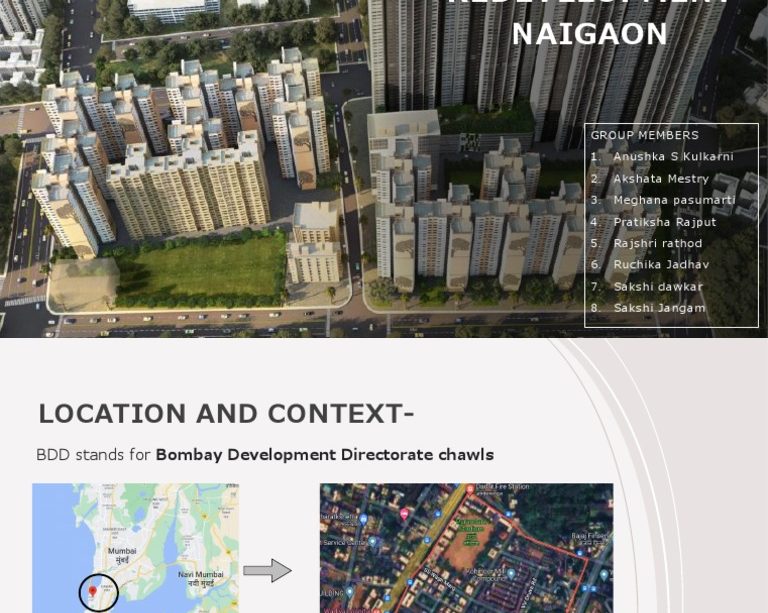Understanding BDD Chawl Redevelopment in Mumbai

Introduction
BDD Chawls, a prominent feature of Mumbai’s urban landscape, symbolize the city’s historical labor market and housing structure. The redevelopment of these chawls is crucial not just for improving living conditions, but also for addressing modern urban challenges like overcrowding and inadequate infrastructure. As Mumbai continues to face a housing crisis, the BDD Chawl redevelopment initiative draws significant attention from government authorities, urban planners, and residents alike.
Understanding BDD Chawls
Built in the 1920s, the BDD Chawls, short for Bombay Development Department Chawls, were originally intended to provide affordable housing to the city’s labor class. However, over the decades, these structures have deteriorated, leading to safety concerns and a decline in living standards. The chawls, which typically house multiple families within cramped quarters, have been criticized for insufficient amenities and facilities.
Current Redevelopment Efforts
In recent years, the Maharashtra government has prioritized the BDD Chawal redevelopment projects, aiming to rebuild these aging structures into modern, livable homes. The project primarily focuses on creating large residential complexes equipped with essential amenities such as parks, schools, and healthcare facilities. Notably, the redevelopment plan also emphasizes the inclusion of existing residents, ensuring that they can benefit from enhanced living conditions while minimizing displacement.
However, the initiative has faced its share of challenges, including bureaucratic delays, funding issues, and resistance from some local residents who fear gentrification. Initiatives like the one undertaken in Worli, which is expected to reclaim and revitalize the area while providing new housing options, show promise for future BDD Chawl redevelopment schemes.
Impact and Significance
The redevelopment of BDD Chawls is expected to have a profound impact on Mumbai’s socio-economic fabric. Improved housing conditions will likely lead to higher living standards for many residents, while also contributing to the city’s overall urban renewal efforts. Furthermore, this initiative aligns with the broader goals of sustainable development, urban planning, and infrastructural improvement.
Conclusion
As the redevelopment of BDD Chawls progresses, it is crucial for stakeholders to engage with the community and address concerns regarding displacement and future housing affordability. The successful implementation of these projects can serve as a blueprint for similar initiatives across urban India, highlighting the importance of sustainable redevelopment that prioritizes both heritage and modern living essentials. Moving forward, ongoing assessment and community involvement will be vital for the success of BDD Chawl redevelopment initiatives.









